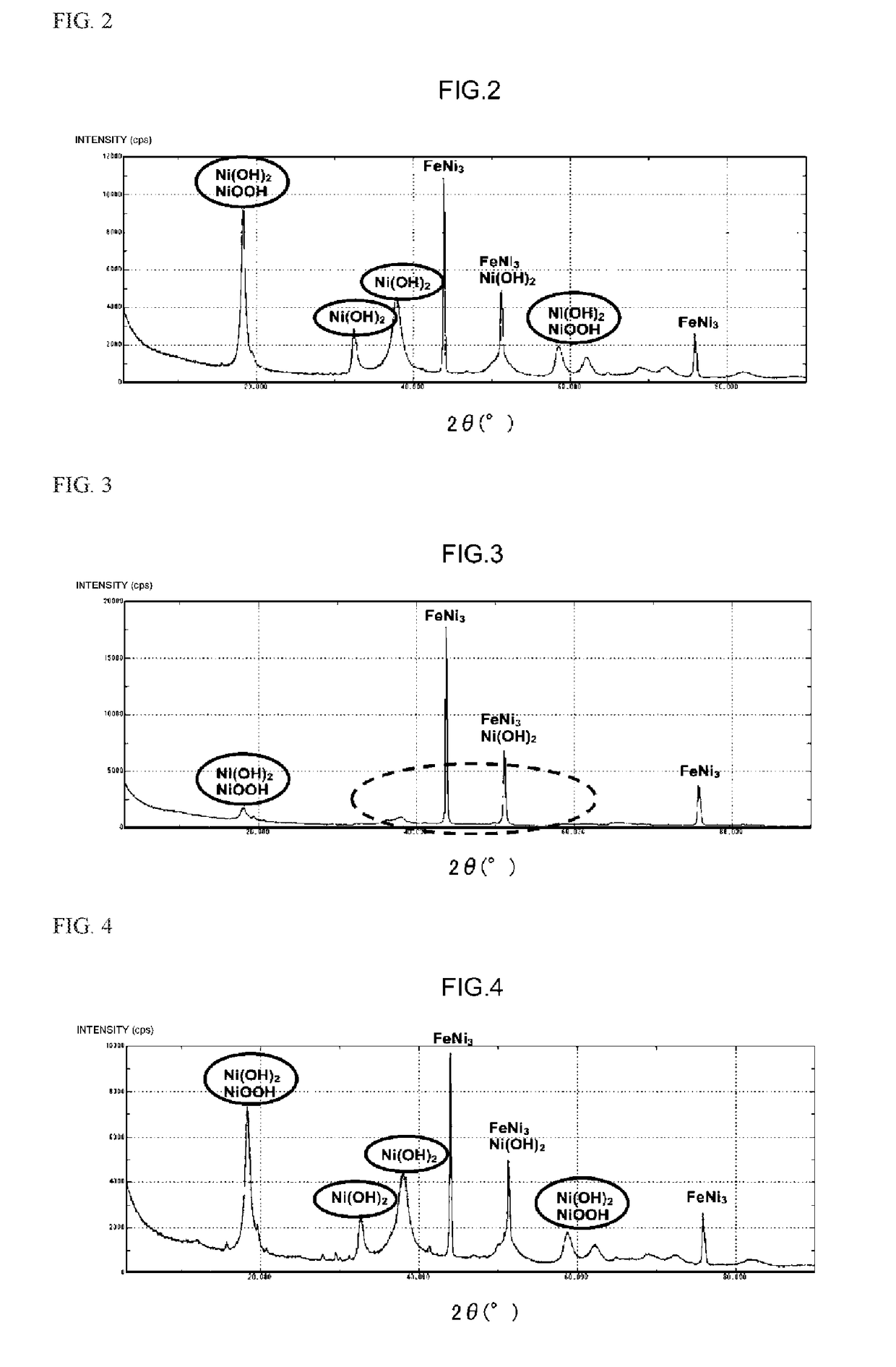Regeneration method of nickel-hydrogen battery
a nickel-hydrogen battery and battery technology, applied in the direction of cell components, sustainable manufacturing/processing, instruments, etc., can solve the problems of discharge capacity decline (chargeable and dischargeable capacity) and achieve the effect of extending the life of the nickel-hydrogen battery, and reducing the degradation of battery performan
- Summary
- Abstract
- Description
- Claims
- Application Information
AI Technical Summary
Benefits of technology
Problems solved by technology
Method used
Image
Examples
first embodiment
[0024]Hereinafter, a regeneration method of a nickel-hydrogen battery according to an embodiment of the present invention will be described in an order of a configuration of a nickel-hydrogen battery that is an object and a regeneration method.
[0025]A nickel-hydrogen battery 100 (hereinafter, referred to as a “battery” when appropriate) that is an object of the regeneration method according to the present embodiment is provided with, for example, a case 40 including a lid 42 as shown in FIG. 1. The case 40 houses therein a positive electrode 10, a negative electrode 20, and a separator 30 which constitute an electrode body of the nickel-hydrogen battery 100 according to the present embodiment.
[0026]The positive electrode 10 is constituted by a plurality of thin plate-shaped (sheet-shaped) electrode structures which are electrically connected to a positive electrode terminal 14 via a positive electrode collector tab 12. Meanwhile, the negative electrode 20 is constituted by a plurali...
second embodiment
[0047]As shown in FIG. 6, a regeneration method according to the present embodiment is configured so that, before performing a regeneration process, a determination process is performed in which an impedance of a nickel-hydrogen battery that is a processing object is measured and whether or not the nickel-hydrogen battery is regenerable is determined based on a result of the impedance measurement.
[0048]In the impedance measurement, for example, an alternating current signal (typically, an alternating current or an alternating current voltage) is applied to the battery while changing frequencies within a range of 1050 Hz to 0.1 Hz and an impedance is measured from a voltage / current response signal. In doing so, a plurality of impedances are obtained due to the differences in frequencies. Based on the plurality of impedances, a call-call plot can be obtained by plotting resistance R (Ω) which is a real part of a complex impedance on a horizontal axis X of plane coordinates and plottin...
text example 1
[0056]A nickel-hydrogen battery (test cell) configured such that positive and negative electrodes in which a positive electrode active material layer and a negative electrode active material layer are respectively retained by a positive electrode current collector and a negative electrode current collector are laminated via a separator and housed in a case with an electrolyte was constructed in plurality.
[0057]A paste for forming the positive electrode active material layer was prepared by mixing nickel hydroxide powder as the positive electrode active material and other components of the positive electrode active material layer in a solution. The paste for forming the positive electrode active material layer was applied on the positive electrode current collector and dried to fabricate a positive electrode in which the positive electrode active material layer is provided on the positive electrode current collector.
[0058]A paste for the negative electrode active material layer was p...
PUM
| Property | Measurement | Unit |
|---|---|---|
| current | aaaaa | aaaaa |
| repetition frequency | aaaaa | aaaaa |
| impedance | aaaaa | aaaaa |
Abstract
Description
Claims
Application Information
 Login to View More
Login to View More - R&D
- Intellectual Property
- Life Sciences
- Materials
- Tech Scout
- Unparalleled Data Quality
- Higher Quality Content
- 60% Fewer Hallucinations
Browse by: Latest US Patents, China's latest patents, Technical Efficacy Thesaurus, Application Domain, Technology Topic, Popular Technical Reports.
© 2025 PatSnap. All rights reserved.Legal|Privacy policy|Modern Slavery Act Transparency Statement|Sitemap|About US| Contact US: help@patsnap.com



